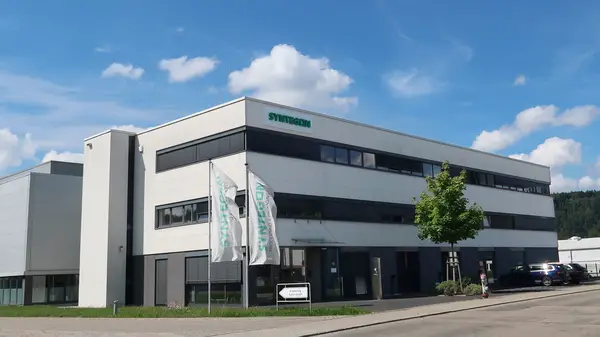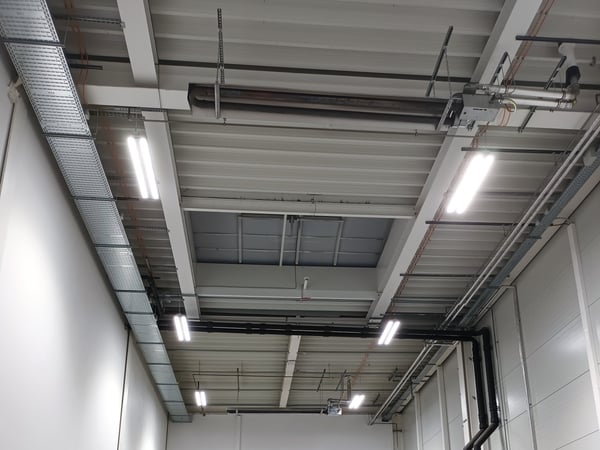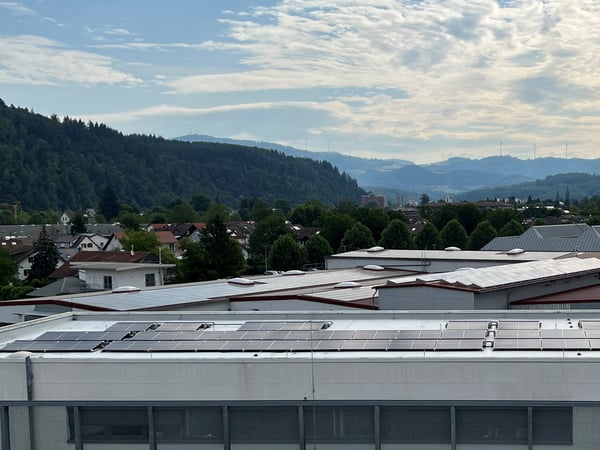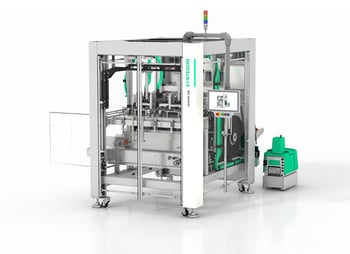
By 2025, Hüttlin GmbH aims to reduce its CO2 emissions by 25 percent compared to 2019.
- LED lighting and photovoltaic systems for more sustainable energy use
- Investments are key to reducing carbon across the enterprise
Schopfheim, June, 29, 2023. Hüttlin GmbH is making strides in climate action with intelligent light sources and an in-house photovoltaic system. A Syntegon Group company based in Schopfheim, Hüttlin replaced its factory’s conventional light sources with LED strips and mounted a photovoltaic system on the building’s roof in 2022. With the Schopfheim project being the latest in a series of site upgrades, Syntegon is certainly doing its part to curb emissions. The Group is aiming for a 25 percent reduction in overall carbon emissions by 2025 compared to 2019, and for 50 percent by 2030. “Energy-efficient lighting and renewable electricity are key factors for achieving these goals,” says Jan Ottmann, managing director at Hüttlin GmbH.
Light emitting diodes replace mercury

In its production hall, Hüttlin has replaced previous light sources with more emission-efficient LED lighting.
Hüttlin long relied on mercury lamps and conventional lighting in its factory, which houses a production floor and systems testing labs. To future-proof the site and meet regulatory requirements, the company opted for LED strips that cut both emissions and costs. Despite their lower wattage, these compact installations provide the same luminous power to markedly reduce electricity consumption. “LEDs enable us to reduce the power consumed for facility lighting by around 70 percent, from 90,000 to 27,000 kilowatt hours a year,” says Ottmann. These savings are also attributable to the LED lamps’ smart management. Equipped with sensors, the LEDs light up only when people are in the factory, and extinguish automatically after a time when the facility is found to be vacant. This saves 23 metric tons of carbon a year at the Schopfheim site – the amount of CO2 trapped annually by 23 beech trees with an average age of 80 years.
Electricity from renewables

On the roof of Hüttlin's production hall, a photovoltaic system will in future produce a quarter of the electricity consumed at the site.
The innovations at Schopfheim are not only aimed at conserving electricity. A photovoltaic system installed last year on the factory’s roof is going to generate a quarter of the electricity consumed at the Hüttlin site. Able to produce 100 kilowatts peak (kWp) and 104,000 kilowatt hours (kWh) annually, this state-of-the-art plant delivers plenty of solar power to this end. The panels also help curb emissions. They are expected to save up to another 44 tons of carbon each year. “With that and the LED strips, we should reach our goal of 25 percent lower emissions by 2025,” says Ottmann.




